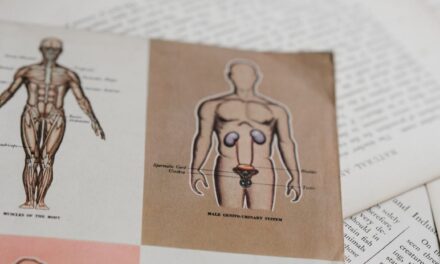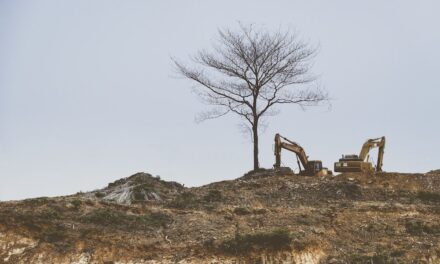Assistant Editor Toni Judnitch: I’m a fiction writer at my core, but damn if poetry doesn’t do something to me. It’s almost physical, the reaction I have when I find a submission I love or I’m listening to my poet friends and peers read their work. When a poem’s good, I am compelled to read it aloud, to speak it into the air—not to understand it or even to hear it necessarily, but to feel it.
This is where poets I talk to usually nod enthusiastically (albeit confusedly) or make an excuse to walk away.
But here I am, a fiction writer who still claps out her syllables when trying to figure out how meter works, desperately in love with poetry. When it’s good, it gets down into my bones, reading feels like casting a spell, it makes me hold my breath without realizing it. Poetry is magic. Or maybe, when manipulated, the magic is language itself.
Craig van Rooyen is only the latest writer to send me into a poetry-fueled tizzy. His poem “Respair,” which appears in Issue 17.1 of The Cincinnati Review, deals with memory, the constant evolution of language, and the futility of trying to hold onto something destined to be lost. This poem begs to be read aloud, and it presents us with something new, with words we might never have heard before—woolfell, slugabed, poltroon—words to sample, to taste, and the speaker’s desperation and wonder at language itself is infectious.
But this poem goes further than merely expressing the joy and despair at the mutability of language. The speaker attaches the loss of words to the loss of his grandfather’s memory: “And where have they gone? Gathering on shrinking ice / with other victims of our inattention, floating out into a rising sea? // Like the last day my grandfather remembered my mother’s name.” Here, the speaker makes an incredible leap from language to life, and the fragment that follows his line of questioning floats like a piece of drifting ice. It conveys a loss, a fracture. Something that remains missing.
Van Rooyen also ends his poem masterfully: “And if I could, I’d turn myself inside out to resurrect // respair, that forgotten Emmaus Road word for / the return of hope after a long period of desolation.” This ending connects language to the body, the willingness to twist and undo the corporeal in order to preserve something intangible. Therein lies the magic—the speaker yearns for hope, for something solid to hold onto, but reaches for language, something impossible, in so many cases, to preserve and rely on. Language simultaneously demonstrates the futility and longing for the stability that comes with definition.
This poem feels particularly apt in relation to the strange world we’re currently inhabiting. The world is uncertain. We seem to constantly be dangling off one precipice or another, and preserving what we can—feelings of normalcy, or even hope—often seems impossible. But van Rooyen’s poem offers us a breath, a moment to exist in a world that grapples effortlessly with the forgotten and the remembered, and there he finds and offers us solace.
Poetry gives me the shivers in part because it carves out new spaces to inhabit, however briefly, and this allows readers to see the world as something new. I’ve written before about reaching for the unknown in fiction, but poets have got it down. The limited space and the emphasis on language gives poets in particular the tools to chisel their ways into these metaphorical air-pockets.
Overly revealing anecdote time: When I was a kid, I would often walk in the woods alone, and I would get anxious at the idea of overturning stones. The thought of flipping something over so that it saw sun for the first time in years, decades, maybe, was too much for me. Reaching down onto the sandy bottom of lakes and pulling up rocks felt magic, powerful. And that’s what good poetry does. It pulls something up from the murk and into the light. That’s why, when I’m reading poetry, I can never quite relax. I’m on the edge of my seat, trying to figure out how they’ve done it.
Christina Olson’s “Seven Facts” (also from Issue 17.1) has been spinning around my noggin for weeks because it takes a creature many of us have never heard of (a velvet ant) and then unmakes and remakes it: “It’s whole body is ammunition. They call it cow killer. Yet it is beautiful, too: encased in orange & white thistle.” Here Olson presents us with the hardness of this creature and then flips it, shows us its anomalous softness. In only a few lines, she changes our views, challenges us to rethink what we know: “The velvet ant could be soft, you think. It could be tamed. Like all things velvet, it pulls your hand near. So small, so downy. Nothing this small could ever harm you.” As she brings in the speaker (you), we sense that there is something deeper to this longing for safety, the desire to take the edge off something sharp, but it’s only a breath. As quickly as this poem flashes and twists, it is finished.
One thing I’ve learned during my time at The Cincinnati Review is how much can be gained by exploring other genres, finding things that excite and confuse us. Reading poetry and literary nonfiction that gives me the old-timey vapors (how do they do it?!) makes me a better fiction writer. It makes me want to write and push myself to carve out my own little moments of wonder.
You can purchase your own copy of Issue 17.1 here.












